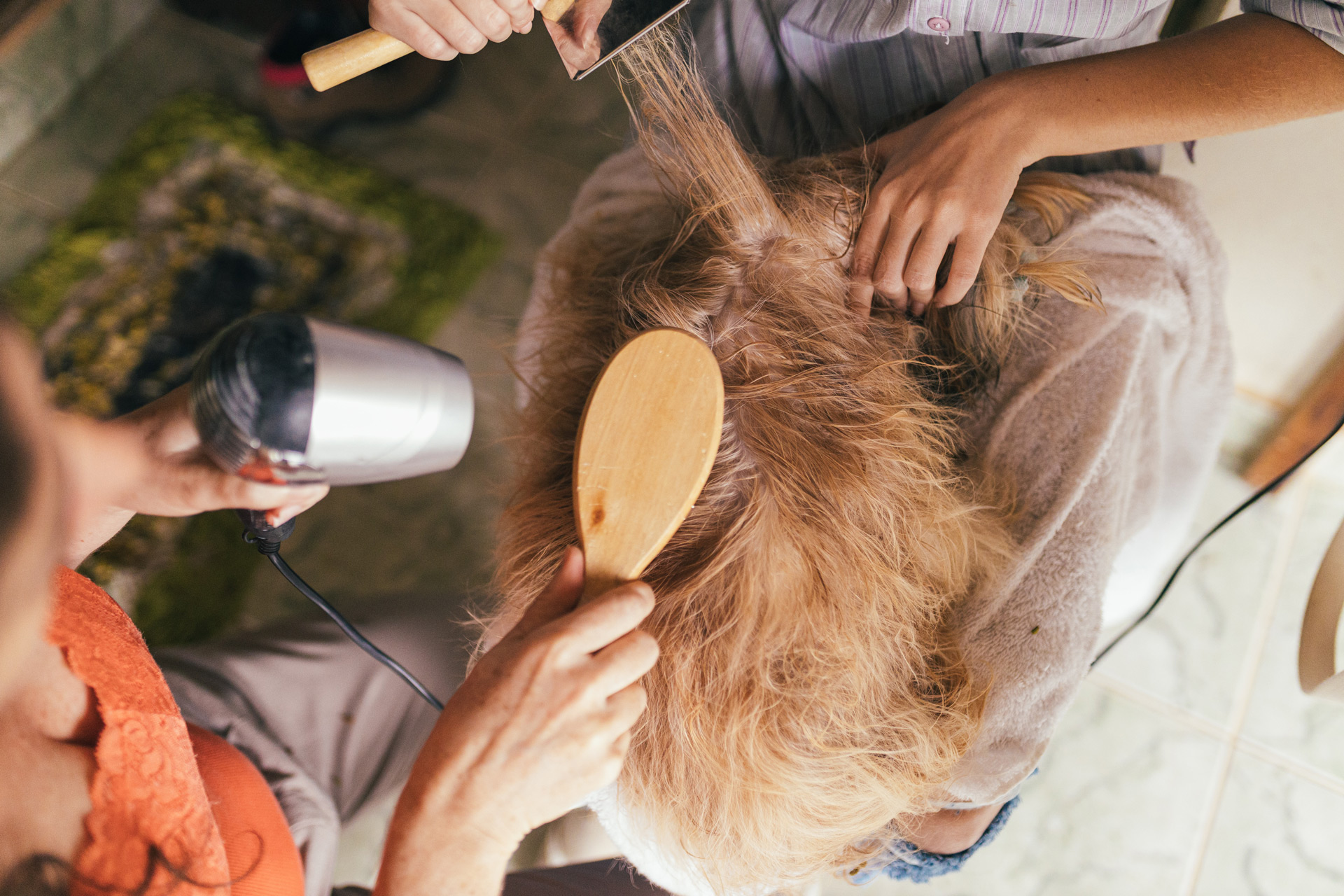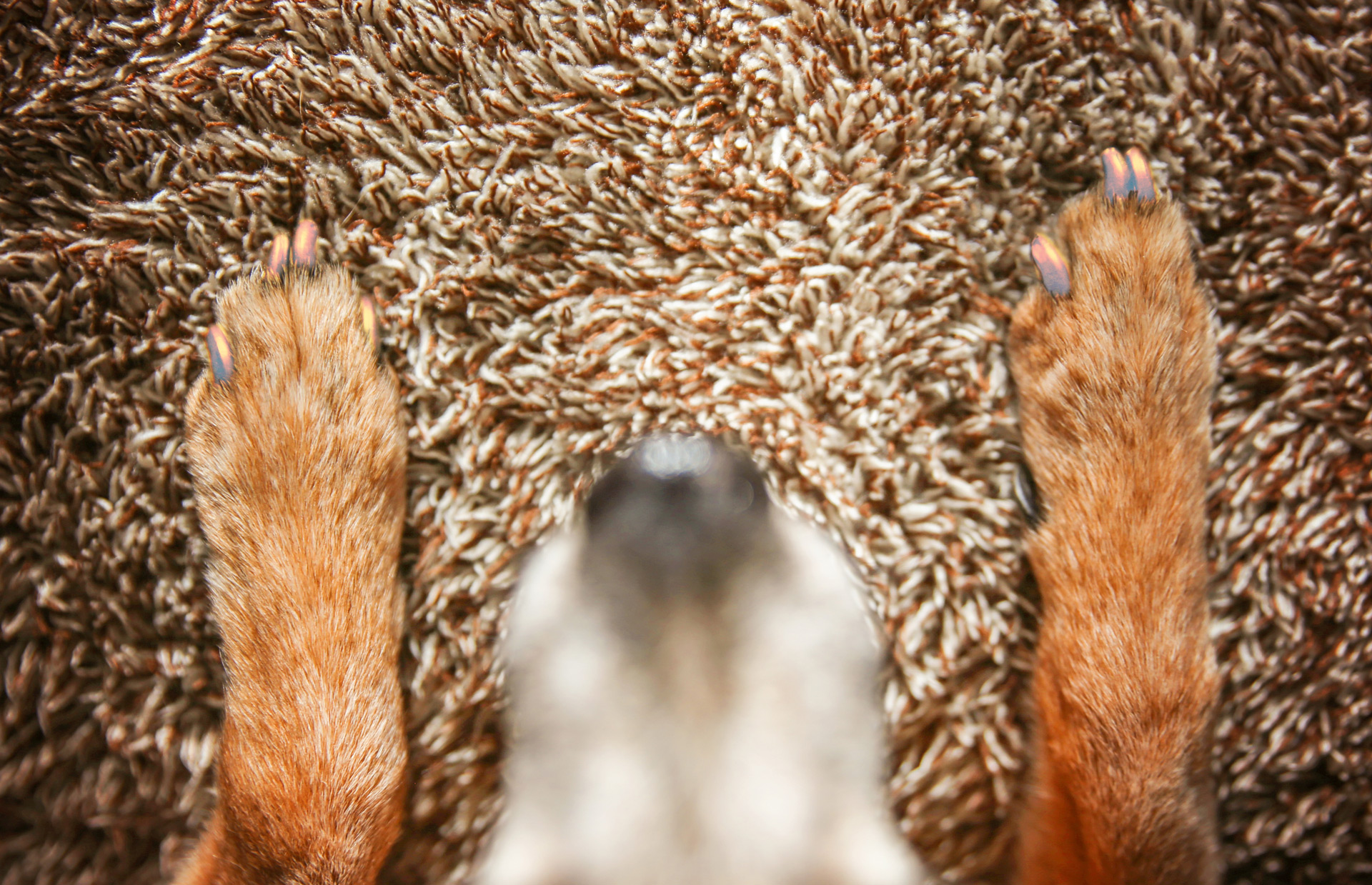
Grooming Tips and Tricks for Your Pup
Grooming is important to make sure your dog is feeling and looking his best. Baths, brushing his hair, dental care, clipping his nails, and ear care are important parts of keeping him in tip-top shape! He may not like it at first, but starting at an early age and having a routine will help him get used to all the hygiene necessities.
Bathing
As a responsible owner, you know that good grooming is an important part of your dog’s health. In general, puppies should be bathed once or twice a month. Bathing too often can lead to itchy, flaky skin or doggie dandruff. Make sure you use a shampoo made specifically for puppies when bathing! Follow these easy steps when bathing your puppy:
- Brush your pup thoroughly to remove dead hair and mats.
- Fill your bathtub with about three inches of lukewarm water.
- Use a spray hose, large cup, or pitcher to wet your puppy completely. Be careful and avoid spraying directly into the ears, eyes, and nose.
- Gently massage the shampoo into the fur, working from head to tail.
- Thoroughly rinse shampoo and again, avoid ears, eyes, and nose
- Dry your puppy off with a large towel or blow dryer. If you use a blow dryer, make sure it’s on the cool setting to avoid burning your puppy’s skin.
Brushing
Routine brushing can help get your dog’s coat looking wonderful. Regular brushing can help remove debris, distribute natural oils throughout the coat, prevent tangles, keep skin clean, and keep skin irritant-free. It can also help you identify cuts, bumps, skin infections, or parasite infections. There are different options when considering a brush. There are bristle brushes, rubber brushes, slicker brushes, and a chamois cloth. Also, different breeds require brushing more or less frequently. Smooth, short-haired breeds, and short to medium-length coats, such as pugs, dachshunds, Labrador retrievers, or German shepherds, only need to be brushed once a week. Dogs with long, luxurious coats, such as Yorkshire terriers and Afghan hounds, are prone to matting and need to be brushed daily.
Dental Care
Brushing your puppy’s teeth will go a long way toward preventing unwanted health issues. Starting your puppy at a young age will also make your life easier once your dog gets older. You should aim to brush his teeth two to three times a week. Follow these steps to help you when brushing your puppy’s teeth:
- When starting, introduce the brushing program gradually. Make the initial sessions short and positive. Also, don’t forget the treats! Praise your puppy and provide comfort throughout the cleaning.
- After getting situated comfortably, use one hand to lift and hold up his lip while the other hand brushes.
- Using a soft-bristle brush and toothpaste suitable for pet use only, gradually introduce the brush to your pup and begin gently rubbing his teeth in a circular motion.
- Remember to remain patient, especially if your puppy is just beginning a brushing routine. Offer a lot of praise and reward him for a good job.
Nail Care
Clipping nails can be challenging and not fun for you or your puppy. However, long nails can cause discomfort for your pet. So, if you hear nails clicking on the floor, if they’re getting caught on the carpet, then it’s time for a trim. Like dental care, if nail care is introduced at a young age, your puppy will be more accepting. The best strategy is to begin conditioning your puppy’s paws early by touching and handling them regularly. Start by gently touching your puppy’s paws, then gradually build up to handling his toes until you can slightly squeeze each toe without it pulling away. If you have an older dog, you can try this too, but it may take longer since puppies are generally more open to new information. You can follow these six steps when trimming your puppy’s nails.
- Find a well-lit area. Use trimmers that are designed for pet use only. Also, make sure they’re sharp to avoid injury. You can talk to your vet or a trusted groomer about which type works best.
- Start with the front of the paws. Hold the paw firmly in your hand, then push down on the top of the toe gently, which will cause the nail to stick out.
- Start at the tip of the nail and trim small pieces at a 45-degree angle. Avoid the quick, which runs down the center of the nail.
- Don’t also forget to trim your puppy’s dewclaws if he has them. Dewclaws are prone to tearing, and removal or injury can cause greater problems for a dog after bones and blood vessels have developed.
- After trimming nails on all four paws, use a file to smooth out each nail. Again, exercise caution and avoid getting too close to the quick.
- Once the process is over, praise your dog and reward him with a jackpot of treats. As you both continue to become better at nail care, the difficulty of the process should begin to diminish.
You may see a little bit of blood coming from your puppy’s nail if you hit the quick. You can clot the wound by applying pressure to the wound with a cotton ball.
Ear Care
It doesn’t matter if your dog has long, floppy ears or short, pointy ears- ear hygiene is a must. Dog ears can hear a variety of sounds undetectable to the human ear. This makes hearing one of a dog’s most important senses. Some of the supplies you’ll need for cleaning your dog’s ears are cotton balls, a flashlight, and an ear cleaning solution designed for pet use only. Once you have your supplies, follow these steps to clean out your dog’s ears:
- Hold your dog’s ear flap in one hand and squirt approximately one teaspoon of solution into the ear canal. Once the solution has made its way into the ear, release the flap and massage the base of the ear for a few seconds. This will help distribute the solution and loosen any wax buildup. Repeat process on the other ear.
- Wipe the loose wax from each ear with the cotton ball and make sure to remove any debris from the ear’s creases.
The ear canal on a dog is extremely sensitive and vulnerable. Objects inserted into the ear canal can potentially cause severe damage to the eardrum. Consult a vet before attempting to address inner-ear issues. Sometimes there will be hair in the dog’s ear that needs to be plucked. Consult a vet or professional groomer before trying to pluck the hair yourself.
Conclusion
Grooming is an essential part of keeping your dog healthy. You can really help your dog by practicing these grooming habits when necessary. You can also find more detailed information on grooming and more puppy information in our book Puppies 101: A Complete Guide to Life with Your Pup.














